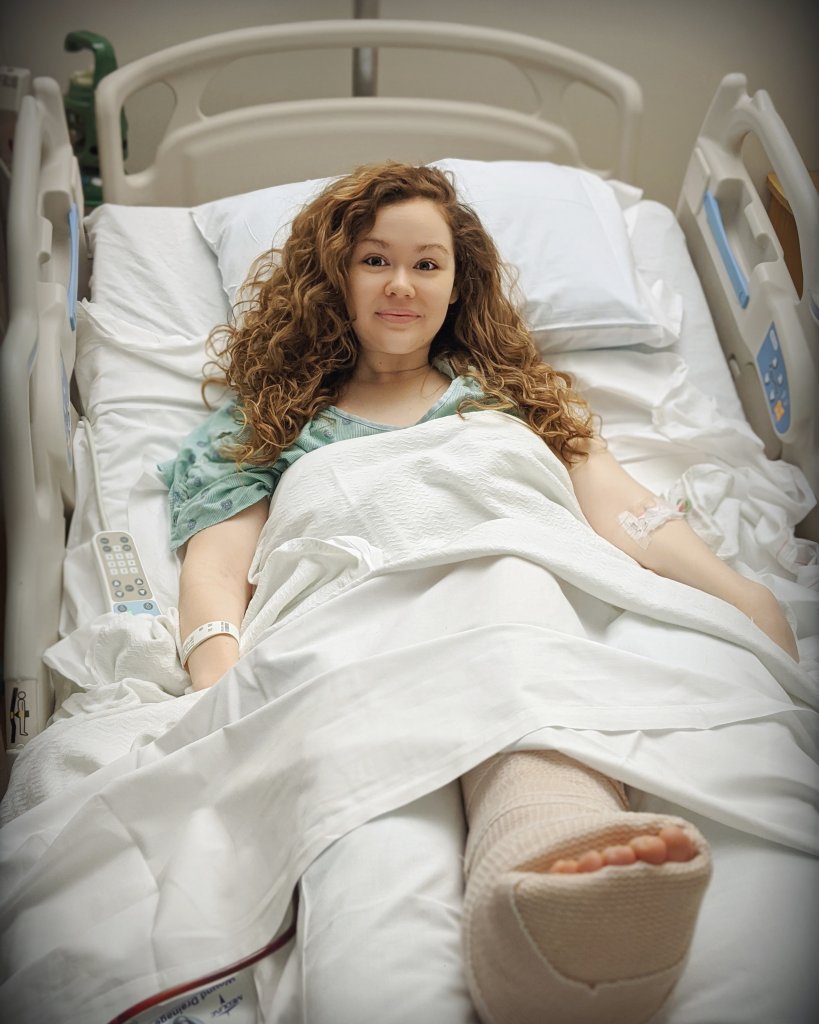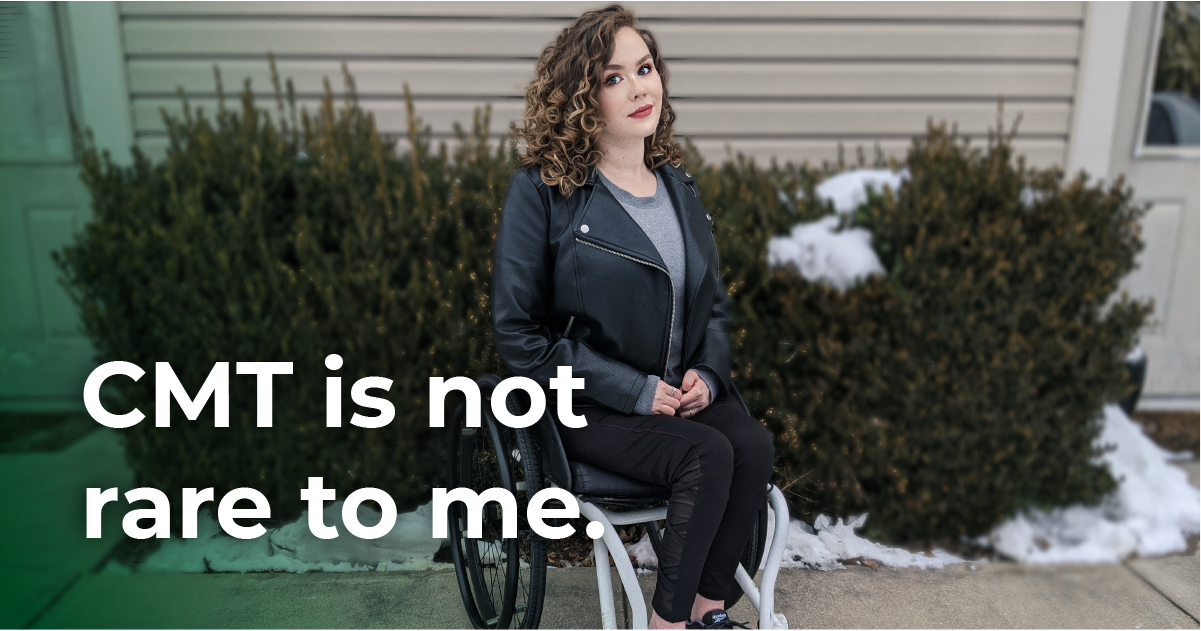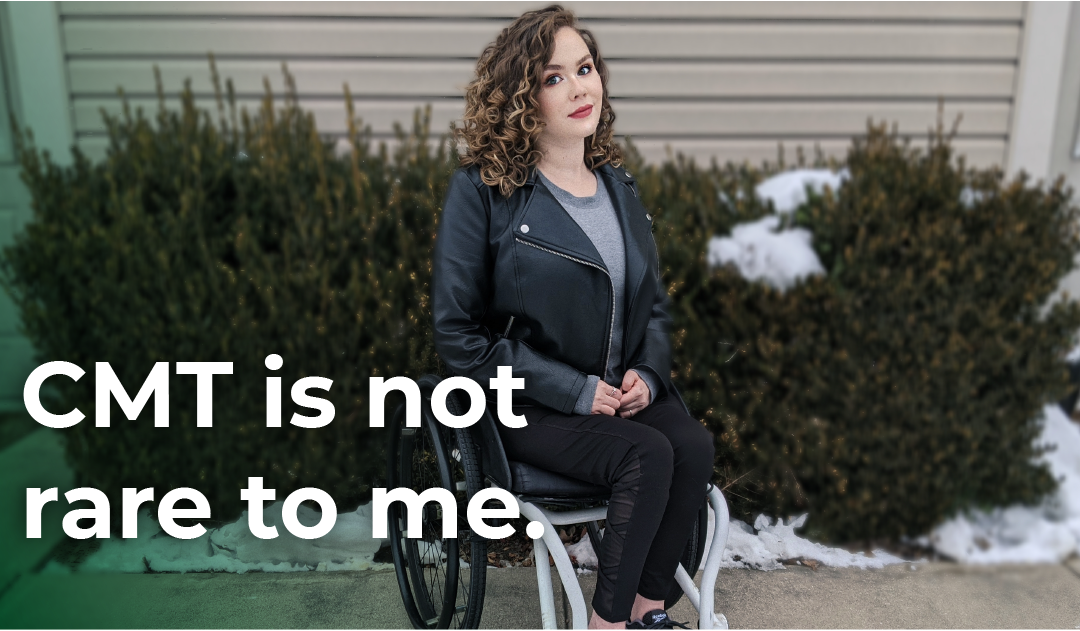By: Monica Thomas, living with CMT2A
When I was a kid and would watch movies in which wishes came true, excitement would build in my belly as I imagined my own wish being granted — what if I could rub a lamp and wish CMT away? Thoughts of life without CMT would race through my mind: running, dancing, jumping, chasing after my imaginary children, crouching down to place a band-aid on their knee. But then I would remember it was just a wish, and the fantasy would come crashing down around me.
When I was diagnosed with CMT at age 2, it wasn’t a surprise to anyone. I was the seventh person in my family to be born with the disease. Although we were familiar with CMT, we couldn’t understand why the disease was progressing faster in me than anyone else in our family.

My dad didn’t get his first pair of leg braces until he was 50; I got mine at age 5. Just a few years later, the braces alone weren’t enough to keep me mobile. I was in middle school when I began relying on a wheelchair part-time. My hands had also begun to deteriorate. By the time I got to college, I could no longer walk at all. Shortly after losing the ability to walk, my right quad muscle atrophied beyond repair, and I lost the ability to stand and drive a car. I’ve now been a full-time wheelchair user for more than a decade.
Several years ago, I set out to learn what type of CMT I have. No one in my family had been genetically tested. Because my degeneration was so much further along than everyone else’s, I feared I had a different mutation. Feeling trapped in a deteriorating body, I was desperate for answers. I went to a neurologist for the first time at age 28, and after several tests, I learned I have CMT2A, which often becomes more severe the earlier in life it presents. My intense progression finally made sense.
A Cycle That Needs Breaking
I often compare having CMT to continually going through the cycle of grief. When I began to lose my ability to walk, I was in denial that my progressive disease was progressing. When my orthotist explained that I was getting weaker, I was so angry — angry at him, at the universe, at the disease coursing through my veins. I decided to enter intensive physical therapy. I bargained that if I worked my muscles to the point of exhaustion, they would rebuild, and I would walk again. Of course, they didn’t. That’s not how CMT works. I fell into a depression that lasted for months. Eventually, I adjusted to wheelchair life and accepted it. This cycle has repeated in some form each time my body loses function. After three decades, the only thing that’s changed is how quickly I’m able to reach acceptance. While it’s never easy, I am thankful that I have a wonderful support system.
A year ago, I had an ankle fusion. My right foot curved in severely, and a fusion was the only option to ease the discomfort. It has been the most painful recovery of my life. I had a host of complications that led to removing my cast at four weeks instead of 10. My husband and I had to wash and redress my wounds twice a day for four weeks. It has taken a full year for the pain to diminish enough to get my life back. While healing from the ankle fusion, I began experiencing intense pain in my right hip. I thought it was just from keeping my leg elevated, but x-rays revealed severe hip dysplasia. Doctors have recommended another major bone surgery called periacetabular osteotomy (PAO). The thought of another recovery like the one I’ve been through is unbearable.

Creating a Future without CMT
As a child watching movies all those years ago, I used to wish that CMT would go away. Today, I realize that wish could actually come true because of scientific advances and cutting-edge research. The thought is more exciting than I could ever put into words.
A world without CMT would mean that I could get some of my independence back. It would mean that I don’t lay awake at night wondering if my future children will have the same childhood I did, where other kids follow them on the playground asking “what’s wrong” with them or chanting mean names at them in the hallway. It would mean less pain, less frustration, less grief. It would mean more living.
The CMT Research Foundation recognizes the urgency of finding treatments and cures. That’s why I’m proud to be a CMT Research Foundation ambassador to raise awareness and funds for the most promising research. I want to eradicate CMT, not just accept that I have to live with it forever and could pass it on to future children. It’s so far past time for a cure. I’m fighting to ensure that no one else has to go through what I’ve been through the past 31 years.

Monica writes extensively about her life with CMT, including her year-long recovery from an ankle fusion, at monicaenglethomas.com. You can also find her on Instagram at @MonicaEngleThomas.
Delivering Treatments & Cures Faster for CMT Patients Like Monica
You can give Monica and everyone living with CMT more than hope by making a donation to the CMT Research Foundation to fund the most promising CMT research that’s solely focused on delivering treatments and cures during our lifetime.
“You have nothing to lose by donating to support CMT research, but millions of people like me have everything to gain. There is a real future without CMT, but we only get there through research. Please help make that research happen. Please help ensure that no one else has to suffer through this disease without any real hope of a treatment or cure.”
— Monica, living with CMT2A

